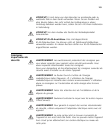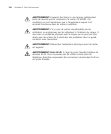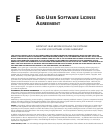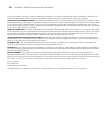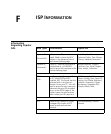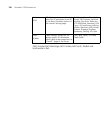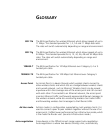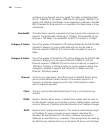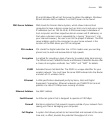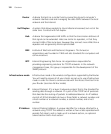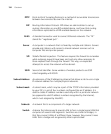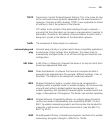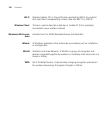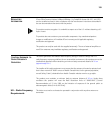GLOSSARY 131
95 and Windows 98 will call the server to obtain the address. Windows
98 will allocate itself an address if no DHCP server can be found.
DNS Server Address DNS stands for Domain Name System, which allows Internet host
computers to have a domain name (such as 3com.com) and one or more
IP addresses (such as 192.34.45.8). A DNS server keeps a database of
host computers and their respective domain names and IP addresses, so
that when a domain name is requested (as in typing “3com.com” into
your Internet browser), the user is sent to the proper IP address. The DNS
server address used by the computers on your home network is the
location of the DNS server your ISP has assigned.
DSL modem DSL stands for digital subscriber line. A DSL modem uses your existing
phone lines to send and receive data at high speeds.
Encryption A method for providing a level of security to wireless data transmissions.
The OfficeConnect Cable/DSL Router and Wireless Cable/DSL Router offer
a choice of encryption methods. See “WPA” and “WEP” for details.
ESSID Extended Service Set Identifier. The ESSID is a unique identifier for your
wireless network. You must have the same ESSID entered into the Router
and each of it's wireless clients.
Ethernet A LAN specification developed jointly by Xerox, Intel and Digital
Equipment Corporation. Ethernet networks use CSMA/CD to transmit
packets at a rate of 10 Mbps over a variety of cables.
Ethernet Address See MAC address.
Fast Ethernet An Ethernet system that is designed to operate at 100 Mbps.
Firewall Electronic protection that prevents anyone outside of your network from
seeing your files or damaging your computers.
Full Duplex A system that allows packets to be transmitted and received at the same
time and, in effect, doubles the potential throughput of a link.



